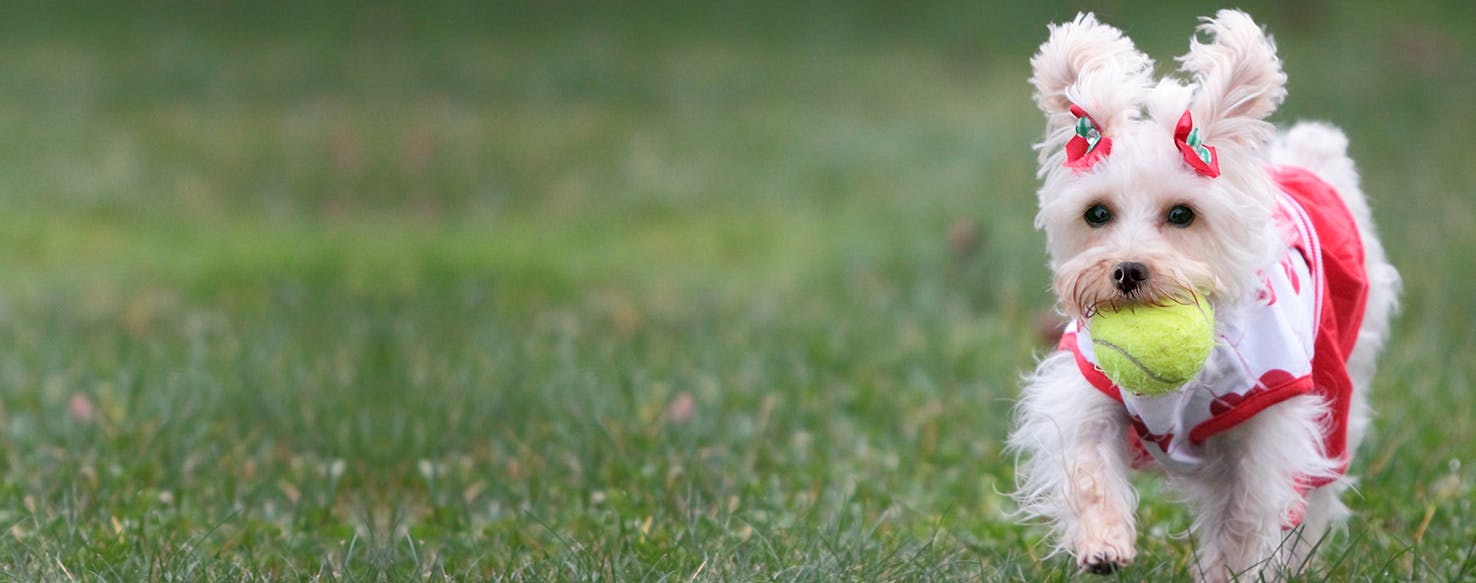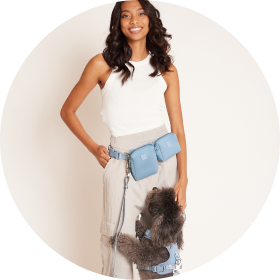- Home
- The Daily Wag!
- Senses
- Can Dogs Feel Pleasure?

We all wish our dogs could talk to us. They're already our best friends, but it would be great to have a chat with our little floof, so we can tell them how much we love them! It would also be easier for us to know how they're feeling.
When it comes to humans, we can ask our friends and family how they're doing, and they're always able to tell us if they're happy, sad, excited, angry, bored, or more. Unfortunately, we haven't figured out a way to interpret our pup's woofs and barks into actual words. So it's harder for us to know how and why dogs feel the way they do.
Many owners wonder what emotions their doggo can actually feel. They may seem happy when we get home from work, when you go for a walk, and when they get scratches, but do they actually feel it, or is that just an automatic physical response? Well, you'll be happy to know that your doggo actually can feel happiness and pleasure, and there's a ton of stuff we can do to keep that tail waggin', tongue hangin' and smile going on our pooches!
If you have a dog, you'll probably know what they do when they're happy. The specific little quirks that they do when they're excited depend on your dog's breed, as well as their upbringing. Regardless, most dogs who are happy or feeling pleasure wag their tails, or maybe even their whole bodies, depending on how excited they are!
As for the rest of their bodies, pleasured or happy pups sometimes roll over on their bellies, giving you better access to their favorite scratchy spot. They may also "play bow", which means they throw their paws on the ground and bend down low, with either their bellies touching the ground or getting pretty close to it. It's a way for them to communicate to both us and other dogs that they're ready to play! They'll also just generally be relaxed. A happy pup doesn't hold their body stiffly, so you won't see any discomfort in an excited, pleasure-filled pupper. They may even run around in circles, or as owners like to affectionally call them, "zoomies".
Dogs' faces are also super expressive as well. Just like humans, if we know our woofer's face well enough, we'll be able to tell when they're happy or excited without them having to tell us (though we wish that they could!).
A happy pupper will have a relaxed face, just like the rest of their bodies. Their eyes will be either soft (if they're getting pet-pets), or alert (if they're ready to play!) Alert eyes can be wide eyes too. Additionally, their ears may either be back against their head or relaxed, how they usually are. As for the mouth, expect to see a waggin' tongue, just like their tail! Doggos that are happy can sometimes even smile, so their mouths may be open with their tongues out.
Depending on your doggo, they may also make noises. Some breeds are more vocal than others--so if your dog isn't yelling, that doesn't mean that they're unhappy! Some dogs when excited may yip, bark, or even cry. Some dogs cry out of happiness, so don't be freaked out if you hear a little whining noise here or there!
Body Language
If you are wondering if your pup is happy, watch for:
- Jumping Up
- Wag Tail
- Hugging
- Stomach Flip
- Tail Up
- Ears Back
- Licking
- Tongue Hanging
Other Signs
Some other signs that your dog is happy include:
- Wagging Or Hanging Tongue
- Body Shaking Back And Forth With Their Tail!
- Barking, Yipping, Or Crying
- Play Bowing Or Rolling Over On Their Belly
- Slobbery, Loving Kisses
- Running Around In Circles
- Smiles Or Open Mouths
Dogs have been around us, humans for a really long time. Thousands of years ago, we took them into our houses, and they've stayed there ever since! So because they've evolved with us, they've picked up on a lot of the things that we do when we feel pleasure!
People that are happy often smile, laugh, make noise, and may even jump up and down. Dogs have seen us do that, and picked up on those things as well! Their version of smiling is showing their teeth with their tongue out; their version of laughing may be barking or whining; and they even jump up and down like we do!
Doggos actually are just like us. Well, they're just like us when we were kids! Studies have shown that dogs basically have the mental and emotional capacities of a 2 1/2-year-old toddler. That means that most doggos have the ability to feel the same emotions we were able to feel when we were that little.
You probably don't remember back that far, but of all of the emotions we have the capability of feeling now, woofers can feel happiness, pleasure, love, joy, anger, sadness, excitement, disgust, and fear. And that's just what research has come up with thus far - many owners out there think that their dogs are capable of feeling way more than that!
While you can't train your dog to be happy, there's obviously a ton that you can do to help make them feel pleasure or happiness! First of all, you need to take time to get to know your doggo. By learning their likes and dislikes, as well as their mannerisms and facial expressions, you'll be able to tell when they're happy or excited by the way that they act.
You'll also know what activities you can do with your pupper that can make them happier! Most of the time, that's running around outside, playtime when you get home from work, eating their favorite meals, scratches on their bellies, and just, plain spending time with you.
Additionally, a happy dog is also a healthy dog, and vice versa. Make sure you keep your dog on a healthy diet so that they stay at a maintainable weight. Keep them exercising, and stick to a regular schedule so that they have the opportunity to do their business whenever they need to.
If you think your dog isn't feeling well, make sure to take them to the vet. Just like us, doggos that aren't feeling well aren't going to be super happy, so the sooner they can get better, the sooner they'll get back to their normal, playful selves!
Have questions or concerns about your pet?
Chat with a veterinary professional in the Wag! app 24/7.
Get Vet ChatWritten by Katherine McCormick
Veterinary reviewed by:
Published: 04/13/2018, edited: 04/06/2020
More articles by Katherine McCormick

